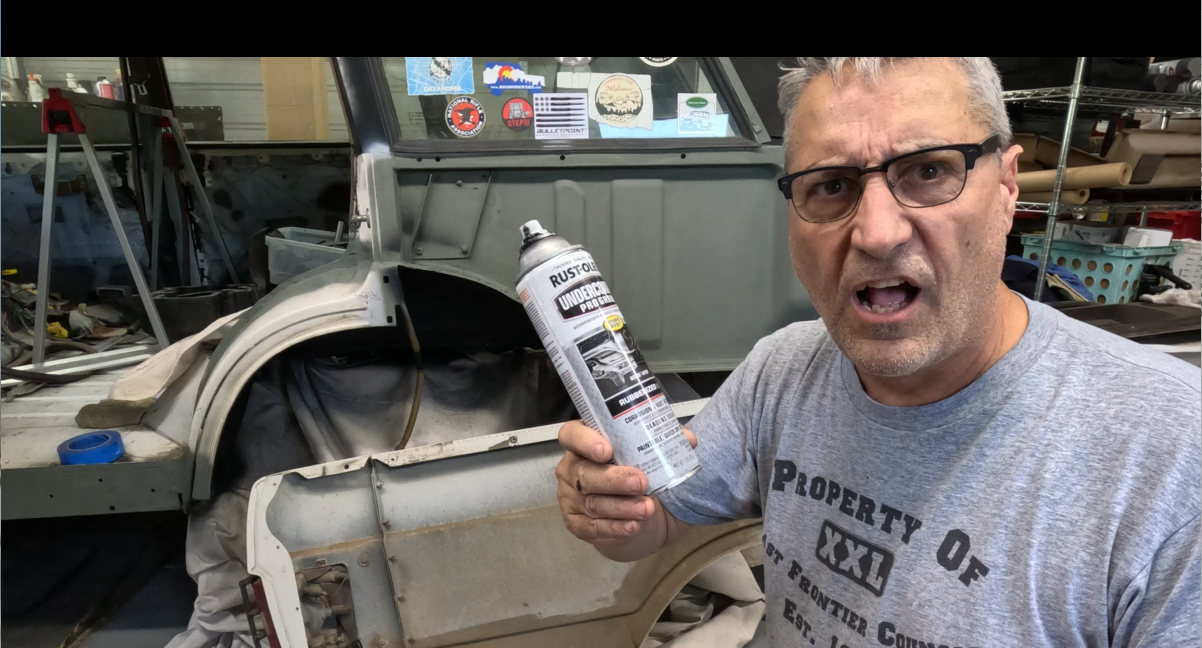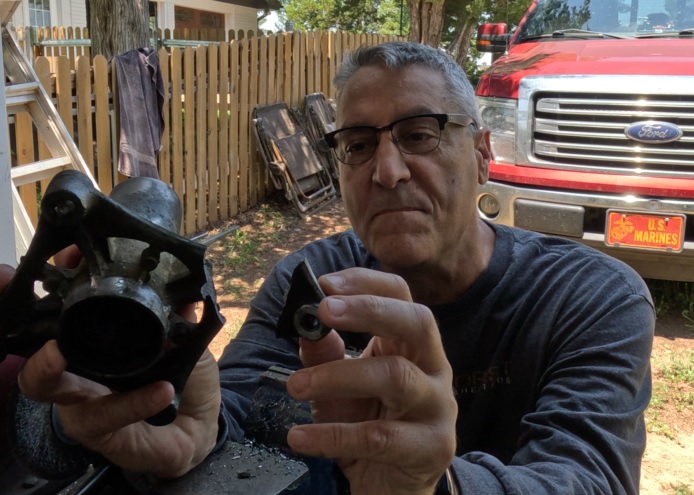What a day.
I started out with all the intention I could muster to complete the floor pan. Unfortunately Fate had another plan for the day.
My plan started out solid. Paint the panels and while it dried see if I could get the Scion started and moved. The Scion as you may (or may not) remember is my son’s first car and he was still driving it until he was rear-ended by a mid-90s model Chevy pickup. The truck was moving at 35-40mph when he hit Rooster sitting still in bumper to bumper traffic. The pickup was completely disabled. The Scion had it’s rear tucked under and was touching the tires.
The though was it wouldn’t take that long to get the wheel wells pushed off the tires. I was wrong. The more I fought with it the hotter the day got and I finally reached my limit. So I went inside to cool off. I was watching the Germany-Denmark match when I got a call from Mrs. Okierover telling me the Honda Pilot with all of the grandchildren in tow would not start.
There is a whole long drama about a forgotten cell phone and a melt down of worry and a lot of really important details about how the battery got run down were left out. The names have been changed to protect the innocent.
Here we go.
- Grandchild #1 left her cell phone at bathroom break an hour back up the road.
- My oldest son who was following along in his car take said grand back to her phone.
- Grandchild #2 melts down with worry.
- Mrs. Okierover tells him to go sit in the car and calm down.
- Grandchild #2 thinks he starts the car but places it in accessory mode and proceeds to sit in the car for more than 30 minutes.
- Dead battery.
- Not confident of the traveler’s ability to purchase and install a new battery I begin googling likely reasons of dead battery not aware of the 30 minute accessory episode.
- Eventually Answers Online mechanic calls wife and diagnoses dead battery.
- Oldest son returns and we attempt to jump battery.
- Battery is buried under the air intake and only the positive is visible.
- Plastic parts removed we finally ground to an engine lift point.
- Car is started.
I learned a lot watching Law and Order: Criminal Intent and I use all those skills to interrogate everyone after they all arrive home. I had the battery tested and it was good, just needed a charge. I also watched a video about placing a new mount which is easy to reach for jumping. So I installed that M6 1.0 bolt and marked it for future reference.
So long story longer, the day was a complete loss. The following day I did get the Scion sorted out and back to running thanks to a sawzall (aka reciprocating saw), a floor jack, a 4 pound hammer, and gravity.
Next week end we’ll get more done ON THE BIG WHITE BUS…hopefully.
Happy Independence Day.
Thanks for reading, like and subscribe, and Happy Rovering.









